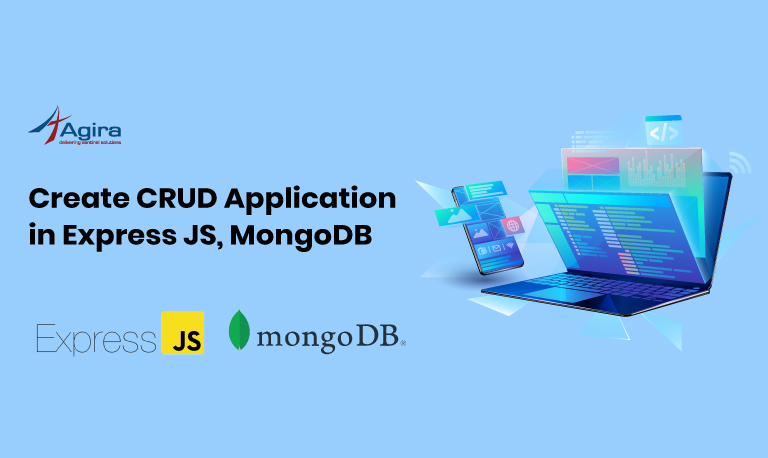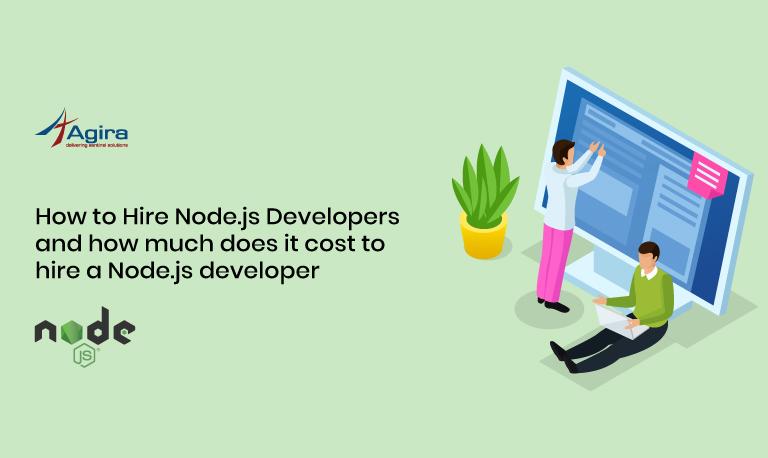Node.js framework supports JavaScript language natively. In the case of application development, other transpiler languages such as TypeScript or CoffeeScript can be used. In this blog, let’s build a Node app structure using JavaScript with Express.
You might have known that the Express framework doesn’t have a strict file and folder structure. For a small application, you can write the code directly on routers. It becomes easy for a quick start. One of the major issues in building a perfect structure is when the application grows, it becomes difficult to manage the code. So, let us find ways to avoid it and define our own app structure.
The App structure – Node.js Project
When we have different files and folders for each step, it will be to easy to manage. So, I have prepared this application structure to make it really easy for your next Node.js project. This structure is based on the Model-View-Controller(MVC) design pattern. The pattern is perfect for large scale projects as well as small ones.
Folders
This is a sample structure with how each folder contributes to the app structure as the main focus.
. ├── bin │ ├── example │ └── www ├── config │ └── example.json ├── controllers │ └── auth │ └── login.controler.js ├── helpers ├── libs ├── middlewares ├── models ├── public ├── routes │ └── auth.js ├── services │ └── auth.service.js ├── validations │ └── auth │ └── login.validate.js ├── views ├── app.js ├── .env ├── .gitignore ├── package.json ├── package-lock.json └── README.md
Routes
Routes are used to map the specific URL with the associated function. In this structure, it connects the URL with the controller function.
Example
const login = require('./../controllers/auth/login.controler');
router.post('/auth/login', login);
Middlewares
Contain global middlewares. Common validations like Token, User access, Max input size, Content type, and Access header validations are handled inside the global middlewares.
In general, there are two types of middlewares are available.
- Request middleware – It validates the incoming request and acts as filters from accessing the application.
- Response middleware – It used to format and log the application response.
Example
app.use(express.json());
app.use(express.urlencoded({ extended: false }));
app.use(cookieParser());
app.use(express.static(path.join(__dirname, 'public')));
Validations
Validation files also one kind of middleware. But this folder contains route specific middleware. Instead of writing the validation inside of the controller, we can organize our request validations inside of the validation folder.
Example
// login.validate.js
var Joi = require('joi');
module.exports = {
body: {
email: Joi.string().email().required(),
password: Joi.string().regex(/[a-zA-Z0-9]{3,30}/).required()
},
options: {
status: 422 // use 422 for request validations
}
};
Controllers
Controller files are responsible for connecting service and view templates after validation.
// login controller.js
var validate = require('express-validation');
var loginValidation = require('./../../validations/auth/login.validate');
var authService = require('./../../services/auth.service');
const login = (req, res, next) => {
console.log(req.body); // => { email: "user@email", password: "pwd" }
let response = authService.login(req.body);
if(response instanceof Error) {
return next(response)
}
res.json({
"status": "success",
response
});
}
module.exports = [
validate(loginValidation), // step 1 connect validation
login // step 2 connect service and return response
]
Services
This folder contains all the business logic.
Models
Each collection/table has a corresponding “Model” file which is used to interact with that collection/table.
Views
Contain layout templates for the web page representation
Helpers
It contains common functions for the project.
Also Read: How To Collect, Customize, And Centralize Node.js Logs
Public
Contains all the static files like images, style, and JavaScript
Bin
Contains all the scripts for code build and deployment
Lib
Third-party systems should be loosely coupled (Handling). So always create a separate library file, when you connect a third-party system like a cache system, payment gateway. It will help when you switch to a different system.
Config
Environment-related configuration comes from .env file. But the config folder contains application related configuration like max limit for pagination.
Files
Naming conventions
Node module names are generally lower case and dash-separated. So keep it the same for the custom modules. Also, we can split the multiple files for the same endpoint. For example, login endpoints have login middleware, login controller, and login service file. Everything you need will be present in different folders with the same file name as login.js. To avoid confusion, you can just add a suffix like register.controller.js. It’s very helpful at the time of search by giving the filenames in code editors.
Example
.
├── controllers
│ └── auth
│ └── login.controler.js
├── routes
│ └── auth.js
├── services
│ └── auth.service.js
├── validations
└── auth
└── login.validate.js
File size
Keep the file size as small as possible. Writing too much code in the single file might confuse others especially if your working in a large team. As it affects the developer’s readability and also editor productivity. It also occupies too much memory space. For better readability, it recommended setting your limit as max 200 lines per file.
README
README file is a text file that contains information about the project and deployment steps.
Sample Readme
# Project Title Project description goes here ## Getting Started Instructions to set up your local machine for development and testing purposes. ### Prerequisites Things you need to install the software and how to install them ``` examples ``` ### Installing A step by step examples that tell you how to get a development env running ``` example ``` ## Deployment Instructions to setup live environment ## Built With * [Express](https://expressjs.com/) - The web framework used ## Versioning We use [SemVer](http://semver.org/) for versioning. For the versions available, see the [tags on this repository](https://github.com/your/project/tags). ## Authors * **YourName** - *CompanyName* - [SocialMedia](https://twitter.com) ## License License information goes here
app.js
It contains the code to initialize the express application.
Take a look at the full sample repository here!
I hope this article helps you in your architecture planning for your next NodeJS project. Shoot your thoughts and questions on this architecture. we will help you out.
Need something interesting on Node JS? Never miss another newsletter. Get weekly updates on development technologies by subscribing to our newsletter.
Is NodeJs a perfect framework for your development? Talk to our tech experts today to develop your ideas into a world-class business. Need to start a project? Hire JavaScript developers from Agira Technologies and fulfill your digital desires and scale your business higher by getting our solution to your market.










